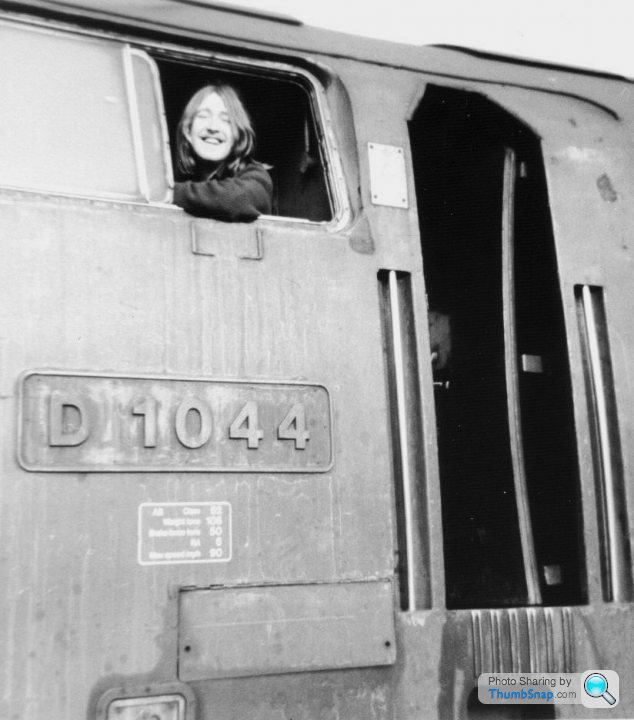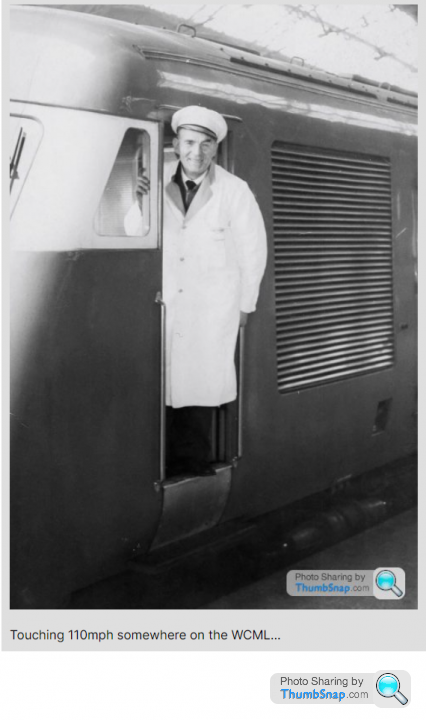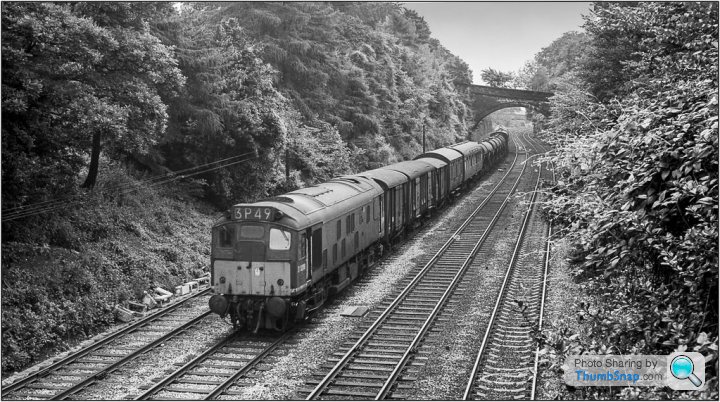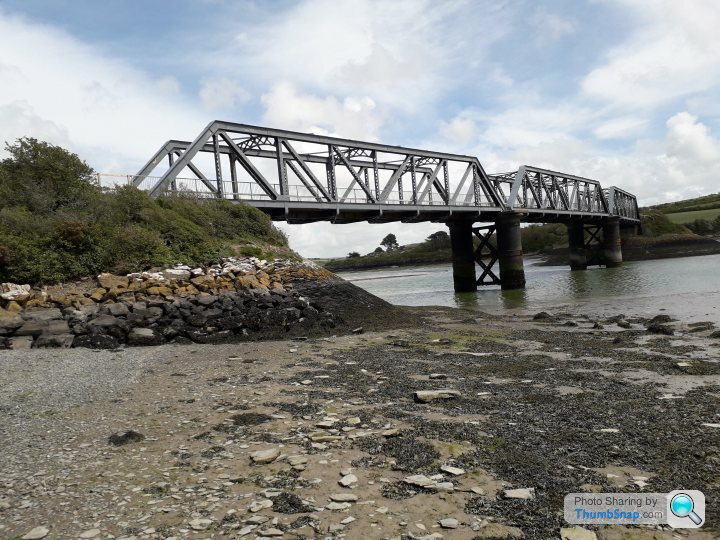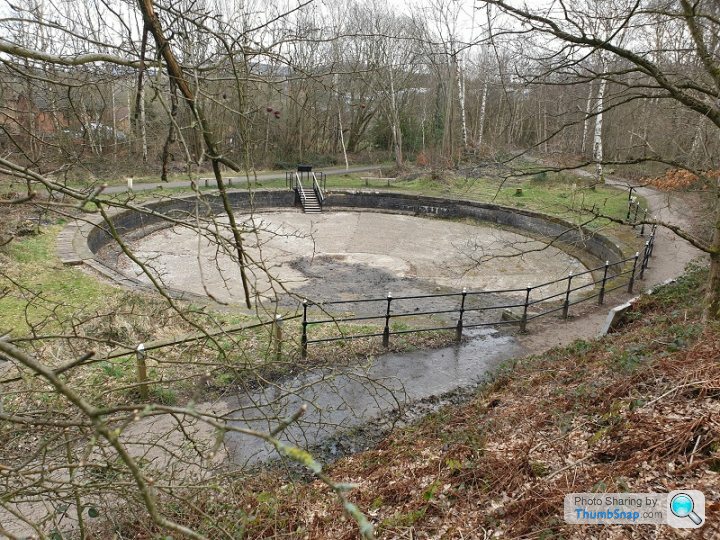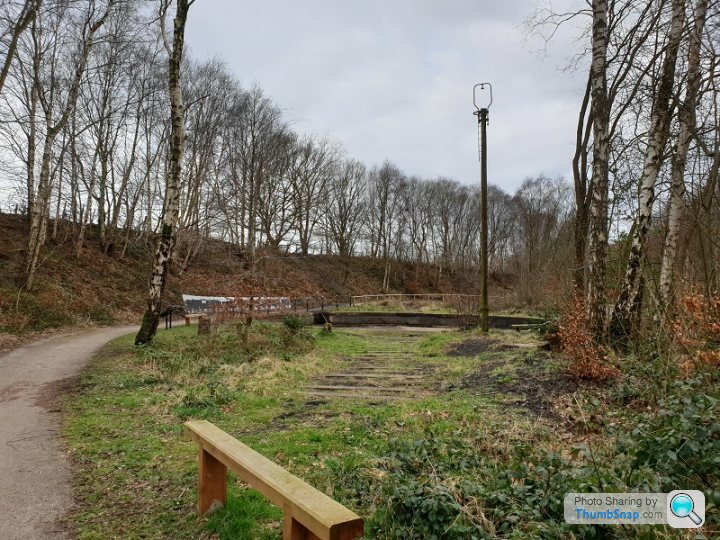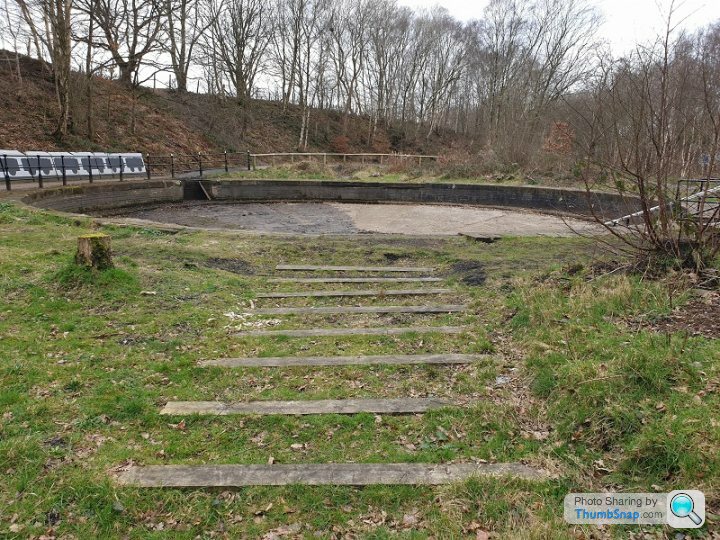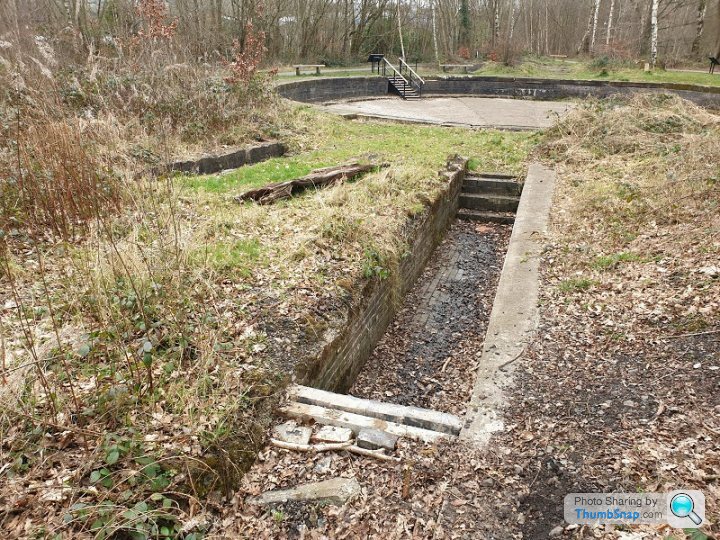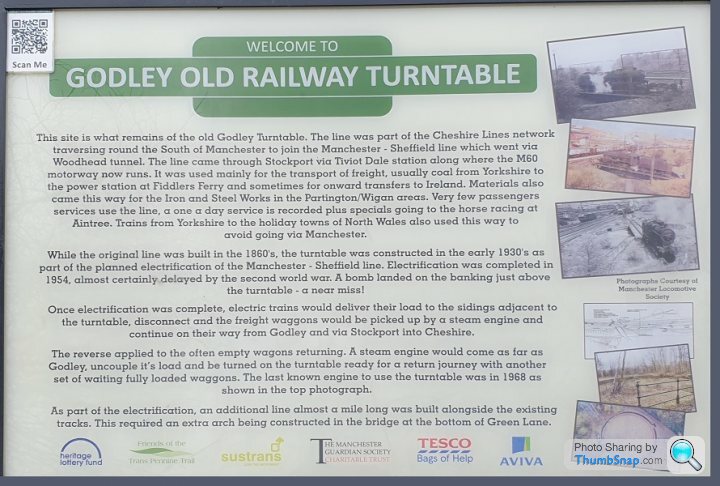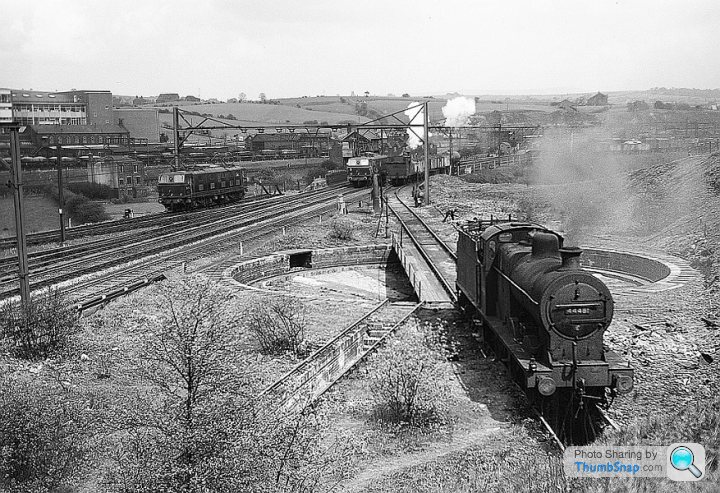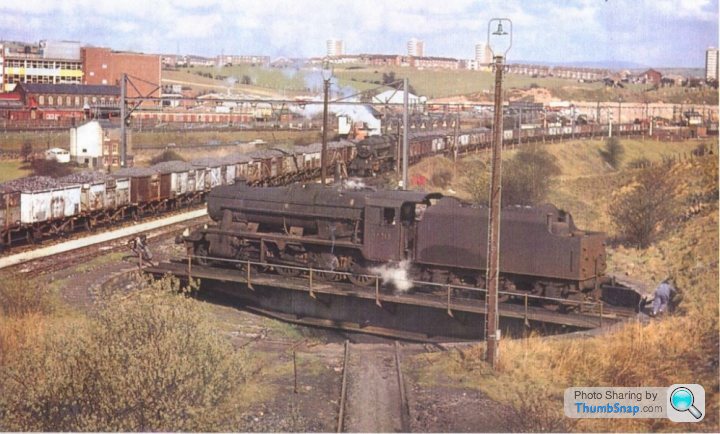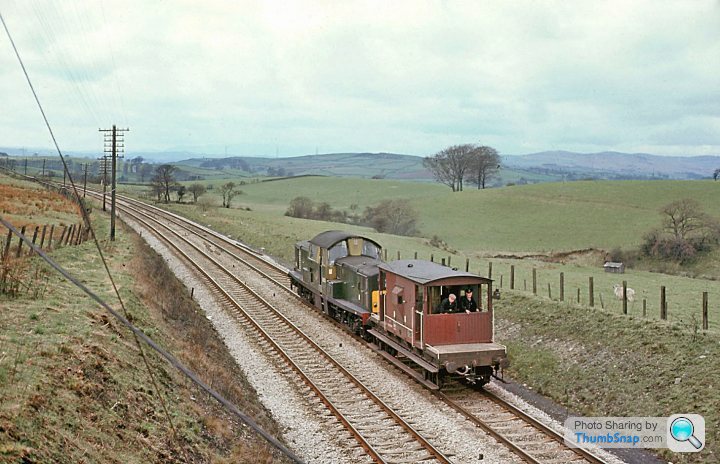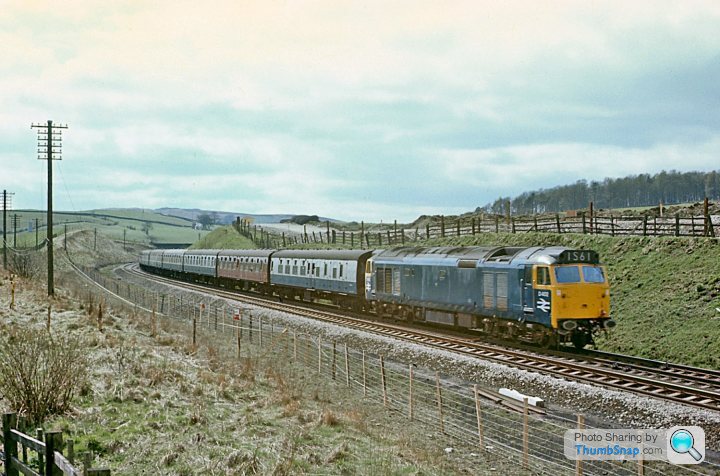Loco sheds and other railway buildings...
Discussion
Yertis said:
That's what I expected I guess. The first minute of this little film sum it up nicely I think.
I think it's like any job or way of life (and the steam-era railway was very much a vocation and a way of life for many of those who worked it) - however long, grubby, dangerous tiring, cold, hot, unpleasant or awkward, there are some people who take to it in their very soul. Sometimes it's those ones that seem so especially unpleasant to outsiders that most grab something within others. There was another reminiscence by an engineman (sorry, I'm terrible at browsing books, recalling the picture the words are painting but completely failing to remember the names - used to drive my university tutors mad with my ability to perfectly recall information but not to know where I got it from!) who was a fireman in the last days of steam at Carlisle and became a driver on diesels. He said that he had some absolutely hellish trips up the 'back end' of the line to Settle - not the infamous 'Long Drag' but the 20-odd miles climbing the other way with the same 1-in-100 gradients but interspersed with 'easier' bits, which were still a fearsome challenge on a heavy freight, pulled by a 25-year-old 8F due for an overhaul and with a tender of badly-screened coal. You'd fret and worry all the way up, trying to balance the steam pressure and the water level and continually working away at the fire, pouring handfuls of small coal into the gaps that kept appearing, having your elbows scorched through the open firebox door, your face poached by steam from leaking cab fittings and your back chilled by a following wind, just counting the wheel 'clicks' until you saw the distant signal at Ais Gill and it would all be over, feeling utterly miserable and certain you'd never be a decent fireman and that the railway was a mug's game, and that if you'd taken a factory job you'd have clocked off at 6pm and could be at the cinema or a dance meeting girls right now instead of shovelling coal in a steel box 1000ft up in the fells...and then as soon as you were coasting down towards Settle and you'd got everything back in order, the water was coming up and the safety valves were feathering, you just couldn't wait to have another crack at it.
Edited by 2xChevrons on Friday 4th November 13:10
2xChevrons said:
Yertis said:
That's what I expected I guess. The first minute of this little film sum it up nicely I think.
I think it's like any job or way of life (and the steam-era railway was very much a vocation and a way of life for many of those who worked it) - however long, grubby, dangerous tiring, cold, hot, unpleasant or awkward, there are some people who take to it in their very soul. Sometimes it's those ones that seem so especially unpleasant to outsiders that most grab something within others. There was another reminiscence by an engineman (sorry, I'm terrible at browsing books, recalling the picture the words are painting but completely failing to remember the names - used to drive my university tutors mad with my ability to perfectly recall information but not to know where I got it from!) who was a fireman in the last days of steam at Carlisle and became a driver on diesels. He said that he had some absolutely hellish trips up the 'back end' of the line to Settle - not the infamous 'Long Drag' but the 20-odd miles climbing the other way with the same 1-in-100 gradients but interspersed with 'easier' bits, which were still a fearsome challenge on a heavy freight, pulled by a 25-year-old 8F due for an overhaul and with a tender of badly-screened coal. You'd fret and worry all the way up, trying to balance the steam pressure and the water level and continually working away at the fire, pouring handfuls of small coal into the gaps that kept appearing, having your elbows scorched through the open firebox door, your face poached by steam from leaking cab fittings and your back chilled by a following wind, just counting the wheel 'clicks' until you saw the distant signal at Ais Gill and it would all be over, feeling utterly miserable and certain you'd never be a decent fireman and that the railway was a mug's game, and that if you'd taken a factory job you'd have clocked off at 6pm and could be at the cinema or a dance meeting girls right now instead of shovelling coal in a steel box 1000ft up in the fells...and then as soon as you were coasting down towards Settle and you'd got everything back in order, the water was coming up and the safety valves were feathering, you just couldn't wait to have another crack at it.
Edited by 2xChevrons on Friday 4th November 13:10

We do still have our 'moments' on modern(ish) diesels these days, two weeks ago I rather let the side down a bit when working the HOBC (High Output Ballast Cleaner) from Stafford down to Fenny Compton. It's supposed to be double manned with a driver at each end, the tail end man being there to assist over the gradients en route, sadly, due entirely to a rostering error I relieved the train at Stafford all on my lonesome, as the rear driver was coming up from Reading and I was supposed to pick him up at Landor Street Jcn in Brum. The train itself weighed 3,300 tons including both locos and is exactly half a mile long from buffer to buffer, getting away from Stafford was easy enough but being routed via the Grand Junction line I had to pass through the twisty bit at Walsall at 20mph and take the Sutton Park line which includes two very steep gradients. The weather that night was atrocious with torrential rain adding to the usual problem on 'the Park' of having leaves on the line, and so climbing up to the first summit at Aldridge I lost all grip and came to a halt a few hundred yards from the top. I even tried putting the loco into slow speed mode but it wasn't having it, the rails were just too damp and I ran out of sand as well. The gradient and rail head conditions defeated my front loco's efforts to keep going. If my mate had been in place he'd have pushed me up the bank with no trouble at all once clear of the 20mph slack through Walsall, with enough momentum for the next climb out of the dip up to Sutton old town station. Naturally I got on the phone to the Bobby straight away and it was arranged that a Mobile Ops Manager would go and fetch my mate from Landor Street and bring him back to jump on the back loco. That took well over an hour meaning we were late into the worksite down at Fenny Compton, lots of umming and aaarhing ensued and the powers that be decided to cancel the job!
Edited by P5BNij on Friday 4th November 14:30
P5BNij said:
Oddly enough Tommy was Small Faces / Faces fan, like me!
This shot of him coming off the Chinnor branch at Princes Risborough in '73 appeared in a magazine some years ago...
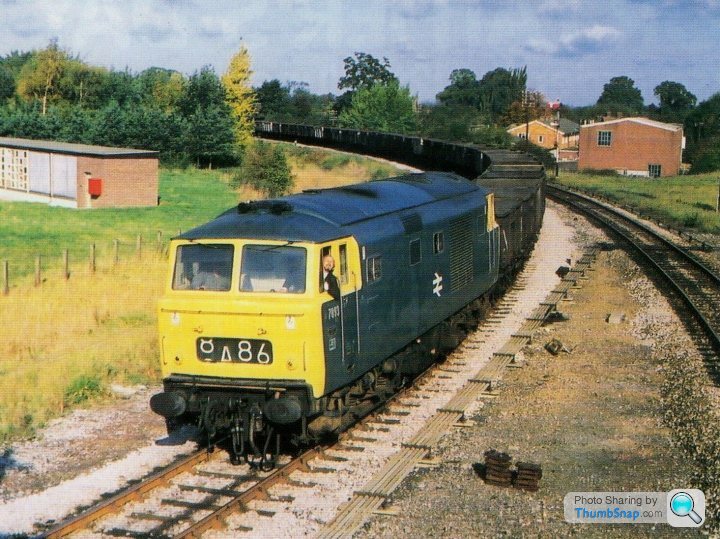
Great pics!This shot of him coming off the Chinnor branch at Princes Risborough in '73 appeared in a magazine some years ago...

I've worked with several old school drivers, blokes who were in "brass" (still a few left I think) and career railwaymen, and many who started as Brakesmen , guards or second men either in Parkeston or Ipswich. I'd like to ask if it was easier to go up the ranks to driver in the bigger depots back in the day?. Many of the local lads tell me that it was very much a "dead mans shoes" situation in the 70's for progression.
Edited by texaxile on Friday 4th November 17:24
texaxile said:
I'd like to ask if it was easier to go up the ranks to driver in the bigger depots back in the day?. Many of the local lads tell me that it was very much a "dead mans shoes" situation in the 70's for progression.
I do know that in general in the 1950s/1960s it was possible to progress very quickly because BR was suffering a massive labour shortage (that was one of the things driving the rapid transition away from steam - it was increasingly difficult to recruit people to work in it when there were increasing numbers of other jobs with better pay, better hours and better conditions). In the 'good old days' (1900s-1940s) it was expected that a newly recruited cleaner would be a fully qualified (but still lower-link) driver in about 15 years. By the dying days of BR steam it was not unusual for a cleaner to become a 'passed cleaner' (a cleaner allowed to do firing turns) in a year or so, and to be a 'passed fireman' (firemen deemed qualified to do basic driving duties) in less than five. And these junior footplate crew were given jobs far in excess of what 'passed' crew were traditionally expected/allowed to do - they were only meant to do shunting and local trip freight work, and even then the idea was that a passed cleaner would be paired with a very experienced driver. But by the early 1960s it was not at all unknown for a branch or stopping freight train to be in the hands of a passed fireman as a driver and a passed cleaner as fireman. BR also had massive problems retaining the staff it did attract - many just got fed up of the working conditions and hours. And in a lot of sheds there was a very strict semi-official hierarchy and 'perks' system, where the new lads were put on all the unpleasant, tedious jobs and given all the turns that required booking on at awkward times or at awkward places, or needed bunking away from home for a night and so on, while the old boys stayed in all the plum, easy jobs. So while you could progress to the footplate from the cleaner ranks much more quickly than traditional, you'd be looking at working away for years on all the undesirable jobs, especially if you were unwilling or unable to move to get better prospects at a different shed.
2xChevrons said:
I do know that in general in the 1950s/1960s it was possible to progress very quickly because BR was suffering a massive labour shortage (that was one of the things driving the rapid transition away from steam - it was increasingly difficult to recruit people to work in it when there were increasing numbers of other jobs with better pay, better hours and better conditions). In the 'good old days' (1900s-1940s) it was expected that a newly recruited cleaner would be a fully qualified (but still lower-link) driver in about 15 years. By the dying days of BR steam it was not unusual for a cleaner to become a 'passed cleaner' (a cleaner allowed to do firing turns) in a year or so, and to be a 'passed fireman' (firemen deemed qualified to do basic driving duties) in less than five. And these junior footplate crew were given jobs far in excess of what 'passed' crew were traditionally expected/allowed to do - they were only meant to do shunting and local trip freight work, and even then the idea was that a passed cleaner would be paired with a very experienced driver. But by the early 1960s it was not at all unknown for a branch or stopping freight train to be in the hands of a passed fireman as a driver and a passed cleaner as fireman.
BR also had massive problems retaining the staff it did attract - many just got fed up of the working conditions and hours. And in a lot of sheds there was a very strict semi-official hierarchy and 'perks' system, where the new lads were put on all the unpleasant, tedious jobs and given all the turns that required booking on at awkward times or at awkward places, or needed bunking away from home for a night and so on, while the old boys stayed in all the plum, easy jobs. So while you could progress to the footplate from the cleaner ranks much more quickly than traditional, you'd be looking at working away for years on all the undesirable jobs, especially if you were unwilling or unable to move to get better prospects at a different shed.
In the late 80s it was very common for second men to transfer to depots around the country with driver vacancies. The London depots were the most popular for obvious reasons - 20-somethings stuck in a rut in a Northern or Scottish town with the prospect of decades waiting for a vacancy at their home depot (definitely dead man’s shoes). Low wages on the railway and cost of living in London meant there were hundreds of vacancies.BR also had massive problems retaining the staff it did attract - many just got fed up of the working conditions and hours. And in a lot of sheds there was a very strict semi-official hierarchy and 'perks' system, where the new lads were put on all the unpleasant, tedious jobs and given all the turns that required booking on at awkward times or at awkward places, or needed bunking away from home for a night and so on, while the old boys stayed in all the plum, easy jobs. So while you could progress to the footplate from the cleaner ranks much more quickly than traditional, you'd be looking at working away for years on all the undesirable jobs, especially if you were unwilling or unable to move to get better prospects at a different shed.
Look at the bright lights! Look at the women!
Once passed out it was then a wait to get back home either as a ‘passed man’ or qualified driver.
Some never came back.
Others, realising they could play the game, decided to transfer to ‘redundant depots’ with vacancies. An odd situation where a deadline was set for a depot or shed closure in 18 months time (for example) but there was still work. Transfer there, gain some extra £££ with travelling expenses and go road learning until the next vacancy list appeared at a redundant depot.
‘Professional road-learners’ - rumours abound of great wages with little or no driving.
P5BNij, that feeling of dread and knowing your whole day is just about to get a whole lost worse when you feel the first slip, the gradual but inevitable loss of speed. The desperation of flicking on the slow speed. The GSM-R calls, the questions, the layers of management flapping. You have one loco and need assistance- cue another couple of hours asking why the loco is coming from Aberdeen rather than 5 miles away.
And then a thought - grab a bag, a box, even a spare HV vest to fashion a device to carry as much sand as you can get from the bottom of the sand boxes. Take a glove off because your hand won’t fit with it on and the sand just pours between the fingers. Regret it when you slice your knuckles on a sharp edge because you forget a clenched hand with a few grains of sand is larger than the same hand going in.
Wipe away the blood. Pick the sand from undear nails. And then set off walking, sand one rail on the way up, the other on the way back. Get ready to move, balancing power against a train wanting to roll back downhill and just watch the rain take away 90% of the sand you’ve just lovingly laid. The wind takes the other 10%.
Feet up. Coat off and hung up to dry. f
 k it.
k it.DickyC said:
Mayfield Station, Manchester. Across the road from the Manchester Piccadilly drop off. Built in 1910 with four platforms to relieve Piccadilly it was closed to passengers in 1960 and closed to freight in 1986. After many proposals for its use had failed, the roof was removed in 2013.
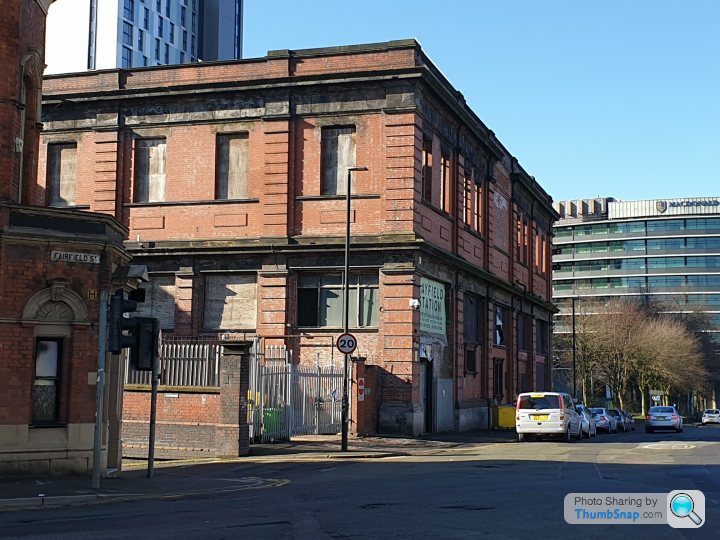
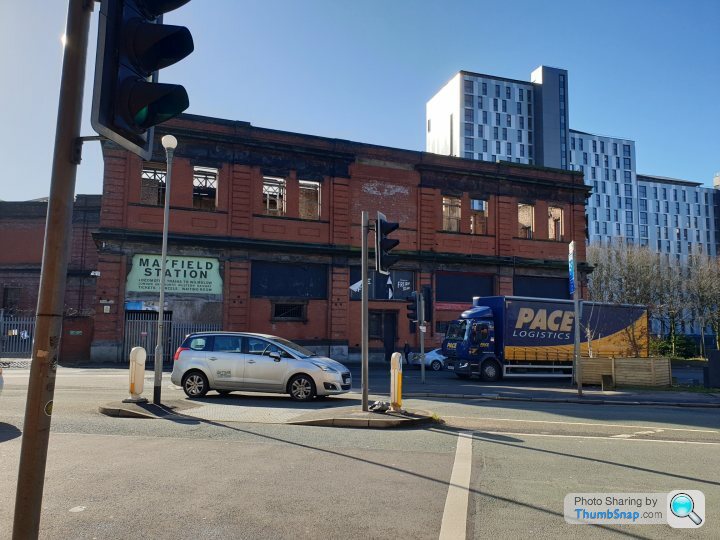
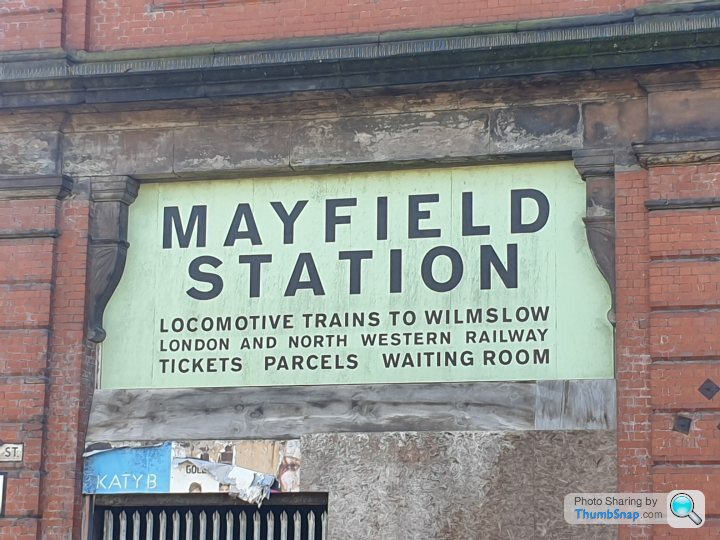
https://www.youtube.com/watch?v=_YInaz8n9IU&t=...


2xChevrons said:
P5BNij said:
Unusual - not just because the Clayton is (apparently) functional, but it's either propelling a brake van in the right direction or travelling 'wrong-line' with the brake van behind. Any idea what's going on? 
P5BNij said:
Propelling in the right direction I'd say, no tail lamp on the brake van, but there is one on the top right corner showing a white lens. Used to happen an lot more in those days 
Thanks. I did look for the tail lamp (or lack of), but wondered if the side lamp was the tail lamp. Like you see in photos from the 50s/60s with diesel locos running light or DMUs still carrying a traditional tail lamp on one side (AIUI because, while modern traction was fitted with in-built electric red lamps, it was the presence of the tail lamp itself that mattered to indicate the train was complete). 
I was also wondering if the chaps would be on the brake van verandah if it was leading - it strikes me as being a rather breezy way to travel!
Gassing Station | Boats, Planes & Trains | Top of Page | What's New | My Stuff





